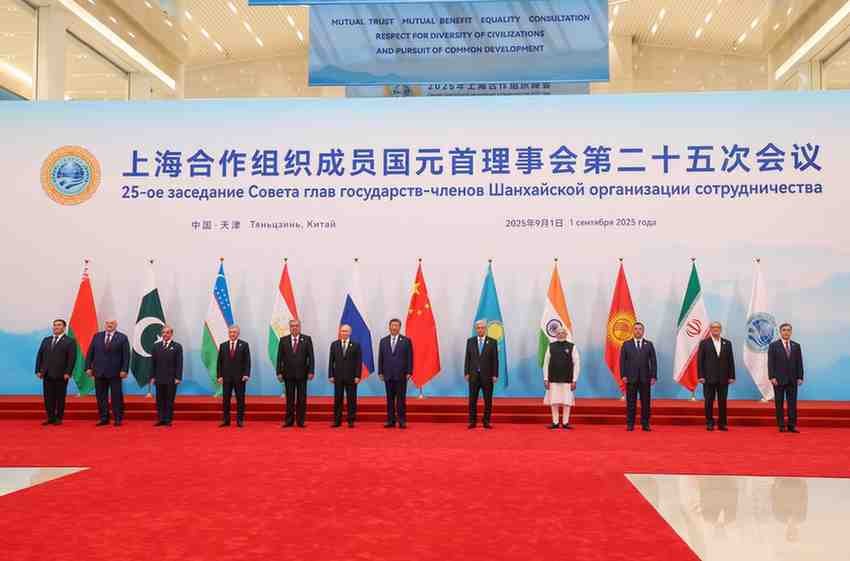The recently concluded Shanghai Cooperation Organisation (SCO) Summit in Tianjin was not just another international gathering. For India, it became a stage where diplomacy met pragmatism, and where Prime Minister Narendra Modi showcased the delicate art of balancing great power relationships without losing sight of national interests, marking his first visit to China in seven years..
In a world divided by sanctions, wars, and tariff battles, India’s conduct at the SCO was a telling reminder of its growing maturity as a global player.
A Careful Balancing Act
Images from the summit carried their own diplomatic weight. PM Modi’s visibly warm handshake with Russian President Vladimir Putin, followed by the two leaders walking hand in hand toward their bilateral meeting, captured headlines across the globe.
For many, this was more than just camaraderie; it was a message of resilience in the India-Russia partnership at a time when the United States has tried to exert pressure through new tariffs and restrictions on oil imports. India made it clear that its historical ties with Moscow remain intact, even as it engages actively with Washington.
At the same time, PM Modi shared moments of warmth with Chinese President Xi Jinping, exchanging smiles during plenary sessions. President Xi emphasized that the “dragon and the elephant must come together,” hinting at a possible thaw after years of tension along the border. For Modi, engaging with Xi was as much about optics as it was about strategy, signaling that dialogue, however tentative, remains on the table.
Standing Firm on Core Principles
Yet India’s friendliness did not blur its red lines. When it came to the Belt and Road Initiative (BRI), India once again stood apart from the rest of the SCO members. Unlike Pakistan, Turkey, and others who endorsed the Chinese project, India withheld support, citing concerns over sovereignty and the corridor passing through Pakistan-occupied Kashmir. The refusal was a reminder that while India seeks cooperation, it does not compromise on issues that strike at the heart of its territorial integrity.
This balance between engagement and assertion is perhaps the most striking feature of India’s diplomacy today. At one level, PM Modi is willing to shake hands and share smiles; at another, he is equally firm about saying no when national interests are at stake.
A Voice for the Global South
In his summit address, PM Modi positioned India as more than a regional actor. He articulated a vision of the SCO as a platform that could serve the aspirations of the Global South. Security, connectivity, and opportunity formed the three central themes of his speech. He emphasized the need for reforming global institutions such as the United Nations and underlined India’s work in counter-terror operations through SCO-RATS.
This wasn’t mere rhetoric. India tied its message to a broader call for fairness in the global order, supporting the newly launched Global Governance Initiative that calls for sovereign equality and opposes unilateral sanctions. By doing so, India sought to establish itself not just as a participant but as a moral compass for the emerging economies that want a more just international system.
India’s presence at Tianjin was equally symbolic for what it said to the West. With U.S. tariffs on Indian goods escalating, the image of PM Modi confidently interacting with both President Putin and President Xi stood out as a declaration of strategic autonomy. India refused to be boxed into one camp or the other.
For Washington, this may appear frustrating, but for India, it reflects a larger truth: diplomacy cannot be reduced to binaries. By engaging all sides — Russia, China, the Central Asian republics, and the wider SCO — India underlined its role as an independent actor charting its own course in an uncertain global order.
Beyond the Optics
Diplomatic choreography is one thing, but PM Modi’s engagements went beyond smiles and handshakes. He held meetings with leaders from Kazakhstan, Nepal, Egypt, Belarus, and the Maldives, focusing on cooperation in trade, health, and security. These conversations reflected India’s growing ambition to be seen as a partner for regional development, not just a geopolitical counterweight.
The subtext was clear: while the big power dynamics dominate headlines, India is quietly expanding its influence across the SCO space, one bilateral relationship at a time.
However, no summit can erase the underlying tensions. India and China continue to face a fraught relationship, with the Line of Actual Control remaining a live issue. The smiles exchanged at Tianjin do not erase the scars of Galwan or other confrontations.
Yet by maintaining dialogue, however fragile, both sides signaled a willingness to manage differences rather than escalate them. For India, this is not about trust but about coexistence in a multipolar world.
Diplomacy Elevated
In the final analysis, the Tianjin summit offered a glimpse into the evolution of Indian diplomacy. There was assertion without arrogance, engagement without submission, and pragmatism without compromise. PM Modi’s balancing act — standing firm on BRI, strengthening ties with Russia, keeping channels open with China, and voicing the concerns of the Global South — was a testament to diplomacy done right.
India’s role at the SCO underscored a larger truth about international politics today: power is no longer about choosing sides but about keeping doors open. In a divided world, India showed that it can speak to all without being beholden to anyone. If diplomacy is indeed the art of the possible, then Tianjin was India’s canvas, and it painted a picture of maturity, independence, and vision.








